
Caring for Your Books
or
The Proper Care and Feeding
of a
Dog Book Collection
I'm not really the ideal candidate to write an article on caring for and preserving your dog books. Honestly, I've probably made every possible mistake that you can imagine which is why you won't find my library filled with pristine volumes. I have, however, learned a few things over the years and I am going to pass them along in hopes that they will help you.
Given some help along the way, old books can last for years. You do have to realize, however, that they are under constant attack. Paper and binding can deteriorate over time and insects can wreak havoc on a collection. The three biggies, though, are light, heat and humidity so I'll begin with them. Then, we'll move on to how to best shelf your books and handle them. After that, I'll add a few comments about cleaning.

LIGHT
When I was a child, growing up in Florida, I remember a field trip to an old Spanish monastery in North Miami. It originally stood in Segovia, Spain and had been built in 1141. In 1920, newspaper magnate William Randolph Hearst, bought it, had it taken apart, block by block, and brought to the U.S. It lay in storage in New York until the 1950s, when it was reborn in Florida as an Episcopal church. Light filled corridors surround a central courtyard. But, behind those beautiful walkways, there's a different story. The rooms, where an ancient library would have been, do not have windows. Indeed, these storehouses where illuminated manuscripts and ancient hand bound books would have been found are dark. Monks working here would have needed candlelight to see what they were doing. In some rooms, they had filtered light from clerestory windows high above. Turned out those old monks knew a thing or two: Light is an enemy of books.
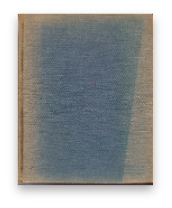
I know the trend today is for light airy rooms where sunlight streams through the windows. This is not the best environment for a library, though. Sunlight can cause the dyes used in the covers of books to fade which is why you will often see "spine sun faded" in the descriptions of old books. The laminate coating applied to many modern dog books to protect the photos on the cover can become yellowed when exposed to sunlight and sometimes will begin to peel. Sunlight can also accelerate the activity of the acids in paper making them become yellowed and brittle over time. Even incandescent or fluorescent light can be harmful.
So, what should you do? If at all possible, position your shelves so they won't be where sun streams in a window. Place curtains, blinds, shades or shutters on the windows and keep them closed as much as possible. When you're not actually in your library (or wherever you have your bookshelves), keep the lights off.
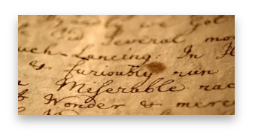
Contending with heat is de rigueur for those of us who live in the South. Our ancestors used to rise early in the morning, complete their chores before a late breakfast and then take the afternoon off. You will have to have similar strategies for helping your books contend with the heat.
Why is heat so deadly to books? Paper is made from long thin fibers of cellulose. These expand and contract according to changes in the temperature. Too much of this and the fibers become weakened (brittle) and can actually break (crumble).
Cool temperatures are best for books. (Remember those old medieval libraries with their thick stone walls?) Ideally, the temperature should be kept at 65 to 70 degrees. For those of us in the South, this usually means that we will have to run the air-conditioning through much of the year. In the North, it means that you'll have to refrain from overheating your house in winter.
Give some thought to temperature when deciding where you wish to house your books. Skip attics and basements as locations for your shelves. If you have no choice but to put your library in such spots, then invest liberally in insulation. If possible, place your shelves on interior walls where they will be less susceptible to changes in temperature. Keep bookshelves away from drafty windows. Ditto for heating ducts and fireplaces.
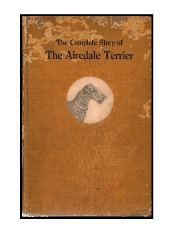
Extremes in humidity can cause lots of damage to books. Manufacturers add chemicals to paper to produce those very white pages and to make the pages more rugged for handling. When these chemicals are combined with moisture, acids result and they begin to eat through paper. That's why preservationists are so high on acid-free paper. Humidity can even cause the covers and pages of books to warp. Excess moisture can loosen glue and cause the endpages to come loose and bindings to fall apart.
Mildew and molds thrive in high humidity and can wreak havoc on books. They can grow on cloth and leather covers and pages producing yucky green, brown or gray blotches. High humidity also is an invitation to insects and pests. It has all the allure of one of those flashing "Vacancy" motel signs.
Ideally, you should maintain a constant 50 percent humidity in your library. Air-conditioning is your best help in achieving this. In winter, you may want to use a humidifier or place pans of water near radiators to keep the air moist.
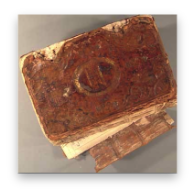
I once visited a library with one of this country's largest repositories of dog books. The librarians there had a list of requirements for those viewing the books and they insisted that these be stringently followed. One of their edicts was that all books had to be placed flat on the tables and opened fully. No holding the books in your hands and reading them. With all due respect, I heartily disagree. Their method may work just fine with newer books in great condition, but it can be death to older books whose bindings may be fragile. It's one of the best ways to break the structure of the spine. I prefer to cradle the spine in my hand and open the book to about the three-quarter mark. Those in better condition can be opened to 90 degrees. This, I find, does not put undue stress on the binding.
If you are handling really valuable books, wash your hands first. Dirt and oil can be transferred to covers and pages and will produce stains. Oil from you hands will cause leather bindings to darken. You'll have to decide whether you consider this desirable. Some people like to see the leather in its original pristine condition, while others cherish that natural darkened patina that comes from handling. I'm sure there are some conservationists out there who recommend wearing gloves before handling old books. I'm apt to think these get in the way of what I see as the sensual experience of reading a book. However, you might want to consider this if you've just plunked down big bucks for a volume. Better yet, put your book in an archival box (we'll get to those later) and buy the cheapest, most beat up copy you can find for actual reading.
Treat your books with a little respect, please. I can't begin to tell you the books in my collection that have been used as coasters and bear the imprints of cups and glasses on their covers. I recently saw a spread in a design magazine in which candlesticks were presented on a stack of books. It looked great but I've had to contend with several books strewn with wax drippings. Books were not designed as holders for ashtrays, either. If you must smoke around your books, at least hold pipes, cigars and cigarettes at a distance. I have several books that have burn marks on the covers or pages. I also have many books that have paint drips and stains on them. Either there are lots of folks who take frequent book breaks while painting their houses or artists and books are a natural combo.
Now, I'm not going to tell you not to read while you're eating. Heck, for a compulsive reader like me such advice would be foolish. However, I am going to advise you to be careful. Stains from oil, spaghetti sauce, barbeque, etc. just won't look so appealing when you open the book in the future.
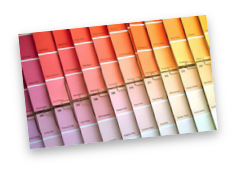
Do not store newspaper clippings in books. Over time, they will yellow and stain the pages. If you have a tattered dust jacket, it is not appropriate to cut out the blurb and glue it onto the inside front cover. Books are not the ideal place for that lock of the baby's hair. A book is not the ideal medium for drying leaves and flowers. Okay, it is, but why not use something expendable like the phone book instead?
And, since this is an article specifically about dog books: protect your books from your dogs. I've got a number of books in my collection which show clear evidence of doggy chomping. I was a first-hand witness to one of these predations. I dragged a valuable book from the jaws of a teething Weimaraner puppy. You can still see the imprints of her little milk teeth on the cover. Puppies will be puppies and that means they like to chew. Some retain this desire into adulthood. So, place cheap paperbacks and books you don't really care for on the lower shelves and your collectible dog books where they can't be reached.
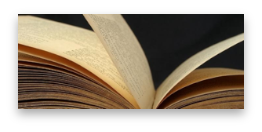
I want to discuss marks in books, as opposed to bookmarks, which we have already covered. Some people seem to have a real predilection toward writing in books while others wouldn't dream of sullying the pages. I think it's genetic, myself. Some people will dash off mini missives in the margins, make detailed notes on the endpages and generally muck up an otherwise lovely copy of a book.
In my experience, those who buy dog books are particularly prone to suffer from this affliction. They will include not only their name and sometimes address on the endpage, but their dog's name, too. I have books which come complete with reproductions of AKC registration slips (official name, breeder, birthdate, color, parents, etc.). I have had a few which include complete three and four generation pedigrees on the endpages. In fact, one of our Airedale collectors out there, after reading my eBay description of a book from the 1920s, contacted me to ask if I would send her the pedigree scrawled on the back pages. I've come across a few books with poems preserved for posterity on the endpages. One of the most unusual markings I've seen in a book was in a copy of Beth Brown's All Dogs Go to Heaven. Reminiscent of the entries one would find in a family Bible, someone had written tributes to a succession of their pet dogs when they died. It gave the dog's name, the date they died and included a few lines about how much they were missed. It was touching, but bordering on maudlin. The person who purchased the book had just lost their own dog and wanted to keep the tradition alive by adding a commemoration to their own newly departed dog.
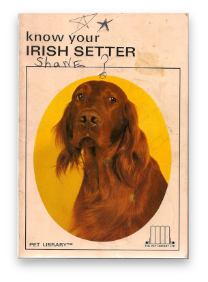
And, I won't even begin to caution you about the damage that a toddler equipped with pen or crayons can do to a book. Apparently, some budding artists in kindergarten start their careers by outlining or coloring in the dogs in books. Bah!
Now, if you are a top breeder who has already earned a place in the annals of doggy history, then scrawl to your heart's content. Comment on the dogs in the photos. Give breeding tips. Include anecdotes. Some future collector will treasure your ramblings. But, for the rest of you: stop writing in the books!!! There's no need to underline passages you want to remember. That's why they invented notepads. (And don't leave the notepad in the book as a bookmark!) If you absolutely can't resist writing in the book or underlining sentences, at least have the decency to use a pencil lightly so that someone can erase it in the future.
I blame schools for the nasty habit of using highlighter pens. Yes, I know they are useful when doing homework and, yes, I've used them myself. But, I don't know anything that's going to reduce the price of a book like opening the pages and seeing garish swathes of yellow or pink. I swear I'd rather have a shaky binding than a book where someone has run amok with a highlighter.
Many collectors do like to make unobtrusive marks in their books. They will note lightly in pencil the date they purchased the book and the price paid. Many booksellers will have already provided that last item. Sometimes book lovers will add a catalog number that corresponds with an entry in the software program where they keep track of their collection. If you adopt this method, please use a pencil with very soft lead (number one is best).

That really is the question and it's one I've struggled with myself. In the beginning, it's a simple question of identifying ownership of a book. Perhaps, people think, if they put their name, and maybe their address, in a book, no one will dare to swipe it. If they mistakenly leave the tome somewhere, it might make it's way back to them. Or, it will serve as a reminder to the doggy friend to whom you have graciously lent the book. (Hint: Don't lend your books. It's not good for friendships.)
My advice: Don't write your name in your books. If you are giving a book as a gift, it's touching to want to write a lovely inscription. Don't do it. Select a nice card to go along with your present. Right now, you may just be buying a book for pleasure and information and have no desire to start a collection, but you may change your mind in the future. Any writing in a book detracts from its value.

If you do opt for a bookplate, I'd advise you to steer clear of the mass-produced ones out there. There are a number of firms that sell stickers that you can apply quickly to any book. Some are done by talented artists and are really very nice. I would especially avoid the "cutesy" ones that feature cartoon dogs.
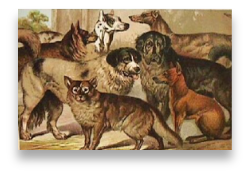
DUST JACKETS
What all collectors value is a book in fine condition with a pristine dust jacket. Save and protect those dust jackets and you will be repaid over time. In fact, some modern books are virtually uncollectible without their dust jackets. Today, we're likely to see dog books with printed covers featuring photos of dogs or a reproduced work of art. In the past, you were more likely to find that publishers lavished all the attention on the dust jacket that capped a plain-Jane looking cloth book. Your best bet for protecting those dust jackets is to invest in a clear plastic sleeve. These plastic covers are readily available online and it is easy to slide the jacket into them. In fact, many collectors prefer to apply plastic covers to all their books, even those without dust jackets. This is a case of listen to what I say, rather than what I've done. Believe me, I wish I had invested in plastic covers for all my books.
If you're not going to invest in plastic covers, then please remove the dust jacket before reading the book and replace it when you are finished. I know one collector who has a positive aversion to plastic covers. I've never understood it myself but, hey, it takes all types. However, he does respect his dust jackets. When he purchases a book for his collection, the dust jacket comes off and, sans jacket, the book goes on the shelf. He places each jacket into an individual file folder and tucks it away in a filing cabinet.
What all collectors value is a book in fine condition with a pristine dust jacket. Save and protect those dust jackets and you will be repaid over time. In fact, some modern books are virtually uncollectible without their dust jackets. Today, we're likely to see dog books with printed covers featuring photos of dogs or a reproduced work of art. In the past, you were more likely to find that publishers lavished all the attention on the dust jacket that capped a plain-Jane looking cloth book. Your best bet for protecting those dust jackets is to invest in a clear plastic sleeve. These plastic covers are readily available online and it is easy to slide the jacket into them. In fact, many collectors prefer to apply plastic covers to all their books, even those without dust jackets. This is a case of listen to what I say, rather than what I've done. Believe me, I wish I had invested in plastic covers for all my books.
If you're not going to invest in plastic covers, then please remove the dust jacket before reading the book and replace it when you are finished. I know one collector who has a positive aversion to plastic covers. I've never understood it myself but, hey, it takes all types. However, he does respect his dust jackets. When he purchases a book for his collection, the dust jacket comes off and, sans jacket, the book goes on the shelf. He places each jacket into an individual file folder and tucks it away in a filing cabinet.

Over the years, I have
had lots of different bookshelves. There are plenty of them out there that you can purchase which range from cheap to very expensive. I've had well made shelves, ones of wood and metal and impromptu ones fashioned with concrete blocks and planks of wood. I'd love to have those beautiful shelves with the glass doors, sometimes called "lawyer's bookshelves" but, alas, they are too rich for my blood. A friend came up with a nifty solution. She repurposed an impressive china cabinet, adding extra shelves and making it into a huge case for her most cherished books. Whatever type of bookshelves you decide on, make sure that the shelves are well supported. Books get very heavy and they can cause shelves to sag in the middle. I would also recommend that you attach the bookshelves to the wall for extra stability. I lost a couple of valuable books once when an eight-foot tall bookcase decided to take a dive. It's just lucky no one was hurt. My own shelves are simple homemade affairs of pine, stained walnut and dressed up by applying molding to the edges.
Whatever type of shelving you select, it should allow you to place the books upright and be deep enough to allow space both in front and back of the books. This allows for good air circulation. You want to allow the books to stand vertically, but not be packed in too tightly. If they are too tightly packed on the shelf, you will damage them when you take one down.
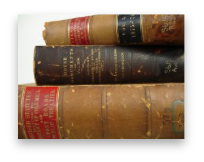
Somewhere along the way, you will undoubtedly run into oversize books which are too large to be placed upright on your shelves. These should be stacked horizontally, but don't stack too high. Again, this is a case of do as I say not as I do. A three or four book high stack should be the limit.
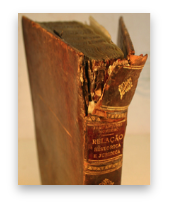
This section is going to consist of only one paragraph, but it's one of the most important. Read any booksellers condition descriptions and you are sure to find ones that note small tears or other damage to the top of the spine. In many cases these are caused by improperly removing books from shelves. People reach for the spine, hook their fingers on the headband and pull the book from the shelf, thereby damaging the top of the spine in the process. If there's enough room above the book, you can reach entirely over it, grab the book by the front of the pages and pull it out. Often, that's not possible. So, push the adjacent books back so that you can grab both sides of the spine.
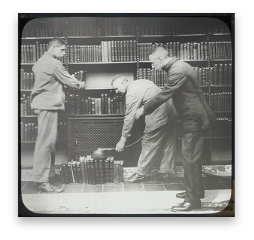
If you are lucky enough to own those great glass fronted shelves, there's probably nothing you need to do to maintain your book collection and you can stop reading now. For the rest of us poor souls, we will have to dust. Confession: I hate dusting and don't do it as often as I should. You'll need to lightly dust the spines and covers, but where dust really collects is on the exposed page edges. If the book has a dust jacket, be sure to remove it before you dust. Hold the book firmly in one hand and gently brush from the spine to the outer page edge with a soft brush, cloth or an old fashioned feather duster. Hand vacs work well too as long as you set them on low power. Recently, my husband bought me a great device that's absolutely perfect for dusting books. It's a battery powered duster and it does a really great job.
I do have one friend with a mega collection that's really too massive for individually removing every book to dust. She's devised a method that she swears by. There's plenty of room at the top of her shelves and she uses a regular canister type vacuum cleaner. She places several layers of cheesecloth to cushion the metal opening so it won't damage her books and she goes to town.
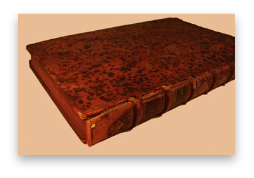
Oiling leather books, particularly when done by novices, presented a whole host of problems. Not only did oiling darken the leather, but if you weren't adept at applying it, you'd end up with blotches. If the leather covering the spine had thinned, the oil could penetrate right through and you'd end up with the oil bleeding onto the pages. In short, you could do much more damage than if you hadn't applied oil at all.
Recently, though, the conventional wisdom has changed. Studies have shown that oiling does nothing to protect and prolong leather bindings. While you will still find lots of leather preservatives sold especially for books out there, most experts are telling collectors and librarians to save their money and skip applying them. The Library of Congress says that leather preservatives can actually harm books. The oil can actually cause the leather to dry out and become stiffer and less pliable. Over time, they say, the leather can become sticky and attract dirt and dust. The folks at the American Institute for Conservation of Historic and Artistic Works are now recommending against using preservatives on leather.
In the end, how long your leather books will last depends on how well made they were in the beginning. Leather books manufactured in the last 50 years or so simply were not made with the care and attention to detail, both in the tanning and construction process, lavished by early craftsmen. Yes, there are some exceptions to the rule, but generally leather books from the pre-1900 period have the best chance of survival. Heck, there are even books from the 1400 and 1500s with such beautiful leather covers that they take your breath away.

ARCHIVAL BOXES
You may want to purchase archival boxes for your most valuable books. They are readily available online and should probably cost you $10-15. At that price, you can't put all your books in these boxes, of course. There are several designs from cardboard kinds with perforations that are mailed flat which you fold around the book. There are also what's called "clamshell" boxes where the book nestles in the box. The top then opens and closes over the book like a clamshell. These are best if you will need to have regular access to the book. Book conservationists and preservationists can also make you fancy custom boxes that match your book, but they can be very expensive.
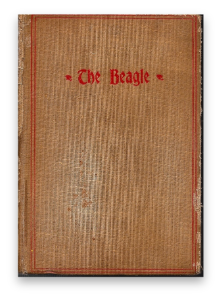
I get crazy when I think of roaches and silverfish feasting on my books. This was a real concern for me since I began the collection while I was living in Florida. Indeed, I have volumes in my collection that I purchased in Florida that show bold evidence of insect damage. The cloth used for book covers has been treated with a starch called sizing and bugs love sizing. Your collection is like a buffet and it will provide ideal nesting material for rodents. Pests can make mincemeat of your prized collection in no time.
There are a number of home remedies to deal with insects and I won't go into them here. In serious infestations, you may have to hire a professional exterminator. If these pests have attacked your books, you need to deal with the situation immediately. Treat the area right away. Then, take your books, place them in plastic bags and put them in the freezer for three or four days. That should kill the adult insects and larvae.
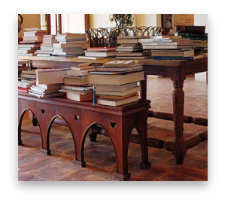
WHEN YOU RUN
OUT OF ROOM
The day will probably come when you simply run out of space on your bookshelves and don't have any room for more cases. So, it's time to box up your excess books. I am an expert at boxing up my doggy collectibles. I have stacks of boxes filled with books everywhere. This is what has worked best for me. Now, I could give you the traditional advice and tell you to get only acid-free boxes, but for most people that's just not practical.
Get strong boxes since books are heavy! The size of box you chose should be geared to your strength. Small boxes are really better, but since I have so many books they just won't do. I get my preferred book boxes for free at the grocery store. I love big banana boxes which are very sturdy and have the advantage of having handholds on their sides. If these aren't available, I like apple boxes.
Take care when you are packing the boxes with your books. It's best if you stack the books rather than placing them on end. Make sure each box is packed snugly. You don't want the books too tight, but there shouldn't be spaces around books or they will lean and warp. Fill in any extra spaces with crumpled newspapers, peanuts or some other filler material. (Warning: Do not use newspapers around books with white covers as the newsprint will rub off.) If you are going to stack the boxes, make sure that they are adequately filled so that the box doesn't cave in when you place them one on top of the other.
I'll let you decide whether it's best to seal the boxes or not. A good heavy duty tape applied to the openings can do much to protect books, especially from insects. However, it also accelerates the breakdown of the acid in the books and the box itself.
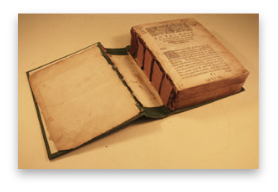
Sadly, I speak from personal experience with regard to this. Last year, we had flooding in our area. While it didn't reach our garage, I discovered that the excess water had indeed percolated up through the cement floor. I had stored boxes, five high, directly onto the floor. I cried as I threw out box after box of old dog magazines, including many from the late 1800s and the early 1900s. Years of work and collecting went directly into the trashcan.
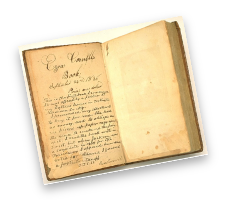
Here's wishing long life for your dog books and many happy hours of reading for you. I hope that your books will give you as much enjoyment as mine have given me. I have had tons of fun collecting them, admiring them in my library and, of course, using them to add to my knowledge about dogs.
My thanks to Phyllis Wayne for suggesting that I write about this topic.
